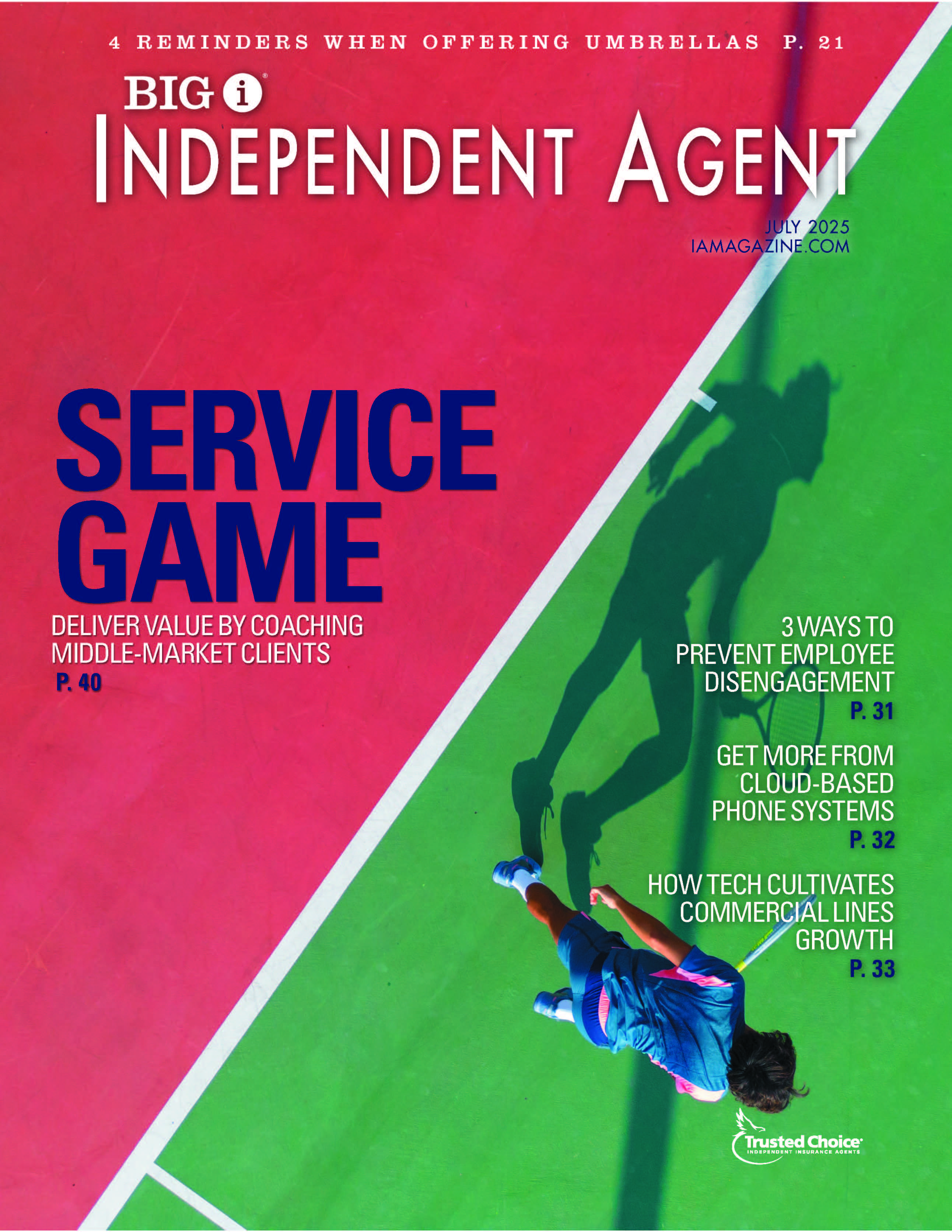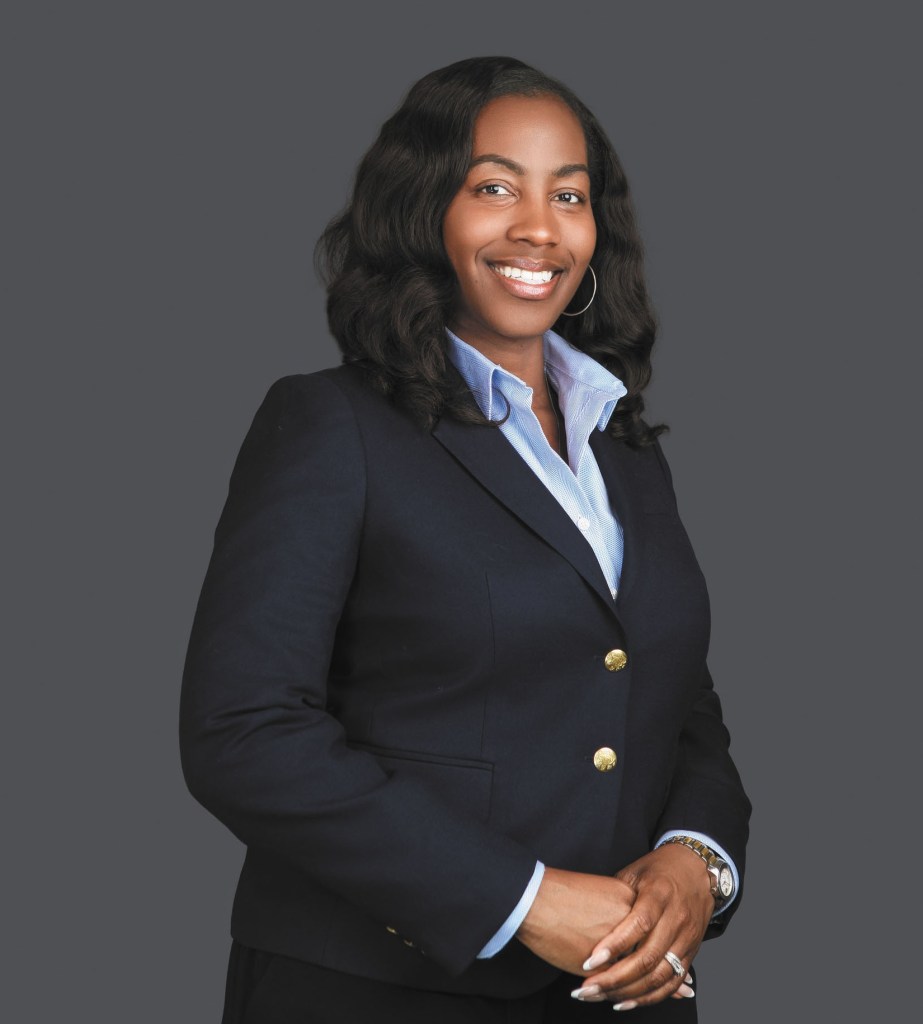Back in Vogue
By: Banham
Dan Cook likes personal lines, particularly the profit margins. About nine months ago, Cook, execu¬tive vice president of Manry Rawls Insurance, decided to beef up the agency’s commitment to personal lines, carving it out as a separate profit center, hir¬ing a business development coordinator, retaining an advertising consultancy to advise on marketing and putting some serious capital into these efforts. “We recognize that personal lines, managed properly, can be a significantly profitable component of our busi¬ness,” Cook says.
Following the marketing consultant’s advice, the large Franklin, Va.-based agency went after new personal lines business with a novel advertising strategy. Manry Rawls crafted a third-party spon¬sorship campaign with The Tidewater News, a local newspaper, that has so far provided a more than 30% return on investment.
“Personal lines insurance for us is growing very rapidly,” Cook says. “We intend to keep it that way.”
A once-embattled business, personal lines also is growing rapidly for many other large agencies, according to the recently released 2006 Future One Agency Universe Study. The annual survey of inde¬pendent insurance agencies defines large agencies as generating $2.5 million to just under $10 million in insurance revenue each year. According to the study, the average number of personal lines accounts has increased for both large and jumbo (more than $10 million in yearly revenue) agencies. One factor in the jump: industry consolidation. “Larger agencies, through mergers and acquisitions, are acquiring sub¬stantial personal lines books from smaller agencies,” the study explains, noting that, “Evidently, large and jumbo agencies are placing new emphasis on personal lines business.”
Enter Stability
Personal lines insurance wasn’t always such a significant revenue generator for independent agencies and brokerages. Only six or seven years ago, automobile insurance and homeowners insur¬ance were problematic lines for carriers, dogged by high loss ratios and intense competition. Several major markets curtailed their homeowner’s insur¬ance provisions, pulling up stakes in troubled states, while auto insurance was perceived by customers as a commodity not needing the “trusted choice” of independent agents.
Those days are seemingly over. “Personal lines is stable business,” says Shirley Lukens, senior vice president and a principal at Reagan Consulting, the Atlanta-based consultancy that conducts the annual best practices study for the Big “I”. Lukens argues that today personal lines insurance lacks the “big swings in rates that you see in commercial lines. While you may not have the huge commission income on a personal lines account like you have on a commercial lines account, the profits are generally higher. You also have the opportunity to write the personal lines for your commercial lines accounts. There is a lot of cross-sell opportunity, which is something that sophisticated agencies are tapping into. They’ve developed systems to make it much easier to provide personal lines profitably.”
In a random sampling of larger agencies, Lukens’ comments and the findings of the Agency Universe Study bear out. Not only have larger agencies put financial muscle into their personal lines operations, they are exercising a wide array of innovative strate¬gies to bring in more accounts and service them efficiently. Other factors besides profitability and cross-selling also play roles in the revival of personal lines, including improved carrier underwriting and technology, greater efficiency through service cen¬ters and separate agency processing organizations, and the willingness of some markets like Central Mutual Insurance Company to present compelling commission structures.
Lukens says that agencies of all sizes should not let the juggernaut of the Big Four personal lines markets—Progressive, GEICO, Allstate and State Farm—dissuade them from considering the business. “If you are willing to make a commitment, spending the time, effort and resources to really do this cor¬rectly, you should strongly reconsider the business,” she says. “Too many times we see personal lines insurance being treated as the red-headed stepchild when it could be a very stable flow of revenue.”
Taking on the Big Four
The Agency Universe Study attributes part of the resuscitated interest in personal lines to the consoli¬dation of the independent agency system, particu¬larly among the larger ranks. One in seven agencies engaged in a merger or acquisition in 2006, although larger agencies were “much more likely” to have taken this path, the survey states. Altogether, 31% of respondents reported involvement in a merger or acquisition with a large agency last year.
Of the mergers and acquisitions reported, 39% involved jumbo agencies and 23% involved large agencies, “many of them acquiring mid-market firms that were writ¬ing a lot of personal lines,” says Madelyn Flanagan, Big “I” vice president of educa¬tion and research. “My sense is that a lot of these larger agencies will continue to write this business from a goodwill standpoint, as an accommodation to the commercial lines clients they have picked up.”
What explains the connection between agency size and personal lines business? The ability of larger agencies to compete against the Big Four is a factor, Flanagan suggests. “They’re just better equipped financially to market themselves in their communities through advertising,” she explains. “They can afford it. And their efforts, according to the study, are well worth it. More of them are picking up market share points from the Big Four.”
Show Me the Money
Profits are the chief lure in selling personal lines insurance. “We’re not talking about (selling to) underage drivers and acquiring that type of business,” Flanagan says. “We’re talking about the folks that own the businesses you insure. They tend to have high-valued homes, nice cars and are typically over the age of 45. They’re good risks.”
Certainly profits are why Van Gilder Insurance Corporation is putting money into its personal lines operations. “Although this is a small part of the pie here, it is tre¬mendously more profitable than other seg¬ments of our business,” says Kim Schaffer, senior vice president of the Denver-based agency, which boasts 275 employees at half a dozen offices throughout the Rocky Mountain region.
Van Gilder brought in $50 million in insurance revenue last year, of which only $2.8 million was personal lines. Although comparatively small revenue-wise, profit-wise it’s another story. “It is so profitable that internally we call it our cash cow,” says Ed Harrington, the agency’s executive vice president and CFO. “Quite honestly, it provides a huge amount of operating profit when you throw in the contingent (commis¬sion). We’ve been in personal lines for more than 100 years and are actively looking for ways to grow it, through alliances with real estate agents, law firms and other centers of influence.”
Steady profits also encouraged Oswald, Trippe and Company, Inc. to invest in its personal lines business. “We have a very aggressive marketing plan,” says Gary Trippe, chairman and CEO of the Fort Myers, Fla.-based agency with 200 employees. “We started out as a commercial lines agency 25 years ago and, within a year, saw the opportunity to expand into personal lines when our anchor client, a developer of resorts, started managing condos. As we began selling commercial lines to condo associations, we branched out into selling personal lines to owners of units.” Roughly half of the agency’s business today is per¬sonal lines, and it boasts more than 30,000 individual policies.
Dedicating Resources
Going after personal lines is not brain surgery. At Oswald, Trippe and Company, the agency specializes in high-income accounts—affluent people generally per¬ceived to be solid risks. “We use Fireman’s Fund, Chubb and The Hartford as markets, all of them specializing in insurance prod¬ucts for the wealthy,” Trippe says. “We see this market as one that direct writers are not going to eat our lunch on.”
Personal lines insurance cannot be treated as backburner operations. Each of the larger agencies featured in this article has a dedicated personal lines staff backed by personal lines account manag¬ers. In Manry Rawls case, the agency has a personal lines team leader, five account managers and a personal lines business development coordinator. Oswald, Trippe has a personal lines producer in each of its 12 offices and recently built a separate personal lines processing center supporting its account managers and staff.
The bilingual staff of five at the process¬ing center is empowered to handle inquiries from the markets writing its business. “We utilize our carriers’ customer service centers, believing that efficiency is a key ingredient in successfully marketing personal lines,” Trippe says. “Given our volume of clients, it is difficult to handle all calls—not that we won’t talk to a client if they call us and not the carrier’s 1-800 phone number. We see the service center as another support person.”
Van Gilder boasts a separate personal lines operation in Meridian, Colo. “We felt there wasn’t much commonality between our group and large commercial, although we share a good relationship and write a lot of business on referrals from them,” Schaf¬fer says.
Cross-Selling Opportunities
Approximately 27% of the agency’s new personal lines accounts came from its com¬mercial group’s referrals, while 35% was cross-selling business bound by account managers. “The rest is incoming calls or the relationships we have with real estate agents and other centers of influence,” Schaffer says.
The agency makes it financially attrac¬tive for account managers to cross-sell, paying them $10 for each applicant they refer that is successfully underwritten. “We also provide 20% of first-year revenue on new business to other parts of our organiza¬tion,” Schaffer adds.
Some carriers also are making it irresist¬ible for agents to market personal lines. For example, Central Mutual Insurance Com¬pany, a regional carrier selling p-c insurance in 18 states, pays commissions well above the average. “Our model is based on agents who successfully sell both our auto and homeowners product to the same account,” says Mike Guth, vice president of personal lines business at the Van Wert, Ohio-based company. “For monoline business—the auto without the homeowners or vice versa—we pay a lower commission.”
Average commissions and contingencies for new and renewal auto/homeowners poli¬cies is about 21%, Guth says. “Obviously, that kind of commission gets agents’ atten¬tion,” he adds. “We offer this level because the business we write is higher quality, in terms of risk. We feel we can make up the money on the underwriting side.”
Most agencies writing the combined lines for Central Mutual are “quite large,” Guth notes. “We finished up last year with $583 million in written personal lines premium, generated by only 460 independent agen¬cies. We put a lot of emphasis on efficiency, and have invested an enormous amount of capital in our front end, making it easy for these agents to interface with our markets. The system generates quotes and issues policies, streamlining the workflow.”
Central Mutual is one of eight insur¬ance company sponsors of the Big “I” Best Practices program. “We’re also working with Reagan Consulting to help agencies grow their personal lines business by develop¬ing a personal lines culture,” Guth says. “Last year, we ran 30 agents through the program [called ‘Vibrant Personal Lines Practices’], which is geared toward agency principals. The goal is to get them to understand the financials of personal lines and why it is important to the valuation of their agencies.”
Agents not selling personal lines “should consider it, if for no other reason than the profits are tempting,” Guth adds. “An agency generating 20% of its revenue from personal lines will generate at least 35% of its profits from this business. That’s been our experience…
“Those kinds of numbers are simply hard to ignore.”
Banham (bzwriter@aol.com) is an IA senior contributing writer.
Targeting Personal Lines Clients
Manry Rawls Insurance earmarks its personal lines efforts on an upper-middle-class clientele. “We’ve moved away from mass merchandising toward a direct solicitation model,” Executive Vice President Dan Cook explains. “What we did was develop an in-house personal lines prospect database, as opposed to buying a generic one. We then took that database and went to the editor of The Tidewater News and said, ‘This is our target customer and this is their demographic profile.’ We then asked if he could marry up our database up with his database of potential subscribers. These were the people his key advertisers wanted to reach, we explained.”
The newspaper acquiesced and cross-referenced its potential subscriber database with the agency’s potential account database. “We then made an arrangement whereby we would target the matches with a free six-month subscription to the newspaper, which we paid for at a discount,” Cook says. “Papers were delivered to 350 homes the first quarter, delivered in a private label plastic bag that said ‘Manry Rawls’ on it. The editor also agreed to give us the A-1 advertising position in the Sunday paper, the lower inch and one-half of the front page. We own that spot each Sunday and three other days during the week. Not only are our ads being delivered through the private label bag, once the paper is taken out and opened, there we are on the front page.”
A week after launching the advertising campaign, personal lines account manag¬ers called the subscribers to ask if they were receiving their newspapers on time. “We didn’t ask for anything,” says Cook. “No hard sell.”
The strategy’s success is evident in the 30-plus ROI. “I give full credit for the idea to the marketing consultant we engaged, Barry Neal, in Holland, Michigan,” Cook adds. “We had the foresight to recognize we didn’t have the experience to develop an effective marketing campaign, so we looked outside the industry to someone who had the skills to try something new. He came up with the idea of hand-delivering our message (to targets) in the form of a gift.”









